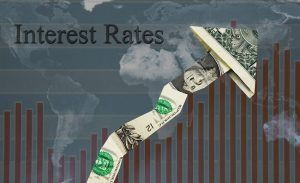How Rising Interest Rates Impact Your Wallet
Posted onThe Federal Reserve raised interest rates three times in 2018. There could be more rate hikes on the way. Wondering how higher interest rates can impact your wallet?
Here’s the short answer.

Savers win. Borrowers lose.
Higher interest rates can affect Americans in a variety of ways, from simple bank savings and CD accounts to home mortgages and credit card interest rates. Here’s what you need to know.
Cash parked in savings accounts earns higher returns.
As the Federal Reserve raises interest rates, banks typically raise the interest rate they pay you on savings account and CDs.
Don’t get too excited. Banks move slowly, the returns are still low and barely keep up with inflation.
The national average for a 2-year CD stood at 0.94%, with a savings account interest rate at 0.09% in the week ending Oct. 19, according to Bankrate. Online banks typically offer slightly more competitive rates than brick and mortar banks. For example, Ally Bank currently shows a 2.50% return on a 2-year CD.
How does this compare historically? In 1984, a 1-year CD came with an enticing 11.27% interest rate.
Bottom line: Savers can generate a little more return on their cash. But, the amounts are small.
Borrowing costs are rising.
Anyone who borrows money pays more for that privilege in a rising interest rate environment.
- An interest rate is the amount of money a bank or credit card issuer charges you to borrow money.
Every time the Fed raises rates, credit card companies almost instantaneously increase their rates by the same amount. So, if you have an average 17% interest rate on your credit card, a .25% Fed rate hike will mean your credit card company will lift your APR to 17.25% soon after.
Anyone who carries a balance on their credit card from month to month, has already seen the interest on that debt rise at least three times this year.
Americans paid banks $104 billion in credit card interest and fees in 2018, up 11% from the prior year, and up 35% over the last five years, as Fed rate increases have been passed on to consumers, according to Magnify Money.
Bottom line: People who carry a balance on their credit cards pay higher interest.
Rising rates impact homebuyers and homeowners too.
- New homebuyers face higher mortgage costs than they did at the start of the year.
- Anyone with an adjustable rate mortgage (ARM) will likely see their rate adjust higher at the end of their fixed rate period.
Mortgage rates already jumped in 2018 and will likely continue to head higher as the Fed continues to hike rates.
- A 30-year fixed rate mortgage climbed to 5.10% in mid-October – an 11-year high.
Other real-life impacts for consumers in a rising rate environment? Any college student taking out a new student loan will pay higher interest rates this year.
Bottom line: Homeowners and students will pay more to borrow money.
Putting It All Together
On the face of it, higher interest rates sound bad.
They do, in fact, trickle down to consumers and businesses with very real impact. In the big picture, however, the Fed’s official interest rate at around 2.00% is still extremely low – and well below an average rate of around 3.5 or even 4.00% and higher during healthy economic periods.
The unique circumstances the U.S. economy faced after the 2008 global financial crisis delayed the Federal Reserve from raising interest rates in a normal manner. The Fed kept interest rates low for so long in an attempt to keep the economy afloat when growth levels were much lower than normal in an economic recovery.
Now, the Fed wants and needs to raise interest rates so the next time the economy sinks into recession, it will have some ammunition to help stimulate growth. Typically, when the economy turns south, the Fed lowers interest rates to improve the economy. The Fed won’t be able to do that during the next recession if interest rates stay low.
The best way for you to handle a rising interest rate environment is to understand the impact and make adjustments where you can.
Consider locking in a fixed rate mortgage (as opposed to a floating ARM). Pay off credit card balances every month, or shift debt to a 0% intro APR balance transfer card to get a break on interest. Rising rates can hurt in the short-term, but in the long-run they allow the Fed to get back to a normal situation, which will pay dividends during the next recession.







